Honey Gourami Tank Mates: Learn The Best Care Guide
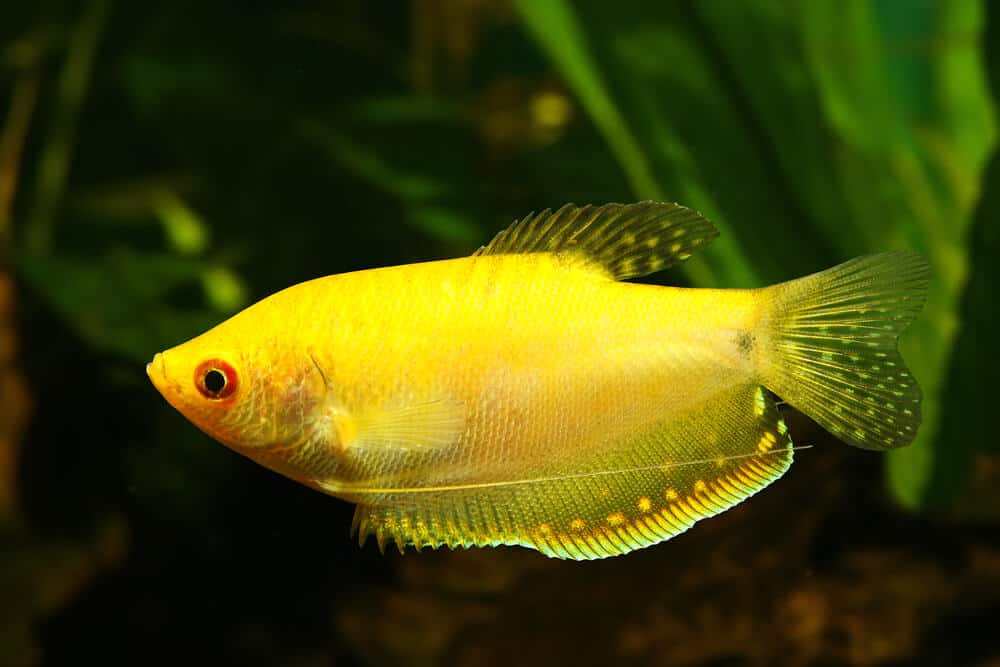
The Honey Gourami is a freshwater fish that can be found in Nepal, northern India, and Bangladesh. It’s an excellent fish for inexperienced fishkeepers who are just getting started.
This species of fish is by no mistake one of the most attractive freshwater fish available. But they’re more than just beautiful fish; they’re also a superb species to possess for a variety of reasons.
The care of honey gouramis is simple and may be handled by aquarists of all levels of competence. Because of their hardiness, there isn’t much you need to be concerned about.
Common Behaviour
Because of its placid temperament and resilience, this species is excellent for inexperienced aquarists. Even though they are classed as benthopelagic fish, they like the tank’s center and surface parts.
They are a cautious and timid species that may take some time to adjust to their new surroundings. The male will only begin to exhibit his typical colors once they have relaxed.
While they are not outgoing, they do appreciate the company of others who share their interests.
Within a group, a hierarchy is likely to emerge. The dominant individual is usually the one to scare away the other fish during feeding times. Additionally, males become hostile toward females.
To discourage bullies, make sure there is enough lush vegetation for hiding places.
It squirts water at its victims to capture them. To keep an eye on prey, they arrange themselves diagonally to the water’s surface. Then it will spray water at the target, causing it to fall into the water and be consumed by the fish.
This species features a labyrinth organ, which allows the fish to engage in unusual activities. It permits it to breathe in low-oxygen environments, for example.
The Appearance Of Honey Gourami
They are frequently confused with Dwarf Gouramis due to their similar form and size.
The Honey Gourami has a slimmer body and smaller dorsal and anal fins. The ventral fins are string-like and thin.
Males and females are distinct hues, as are most fish. At first, they are all silvery gray to light yellow in appearance, with a light brown horizontal stripe running from behind the eye to the caudal peduncle in the mid-body.
Males develop a vivid honey-yellow or reddish-orange hue, while females remain this color throughout their lives. The fish’s throat, face, and belly will turn a dark blue/black shade, while the main body will turn a honey orange color.
The Honey Gourami is the tiniest fish in the Trichogaster genus, with males reaching 1.5 inches and females reaching 2 inches. They grow up to 3 inches in length in rare instances.
Tank Conditions
The Honey Gourami is a robust, tiny fish. They like warm water and can withstand minor chemistry alterations.
The temperature of their labyrinth organ is quite sensitive. As a result, it’s preferable to keep the aquarium in a place with a temperature that’s close to the tank’s water temperature.
If you are unable to do so, a heater might be used to maintain a constant water temperature. They are bashful creatures who want to feel comfortable and secure within the confines of the aquarium.
When putting up the tank with thick foliage and floating plants, aim to provide plenty of hiding places. Allow some surface regions to remain exposed so that the fish can breathe.
They will frequently attempt to reach the surface to breathe.
Water changes should be done every week, with at least 25% of the tank’s water being changed.
Toxins will not develop up with a sound filtering system and regular water replacements.
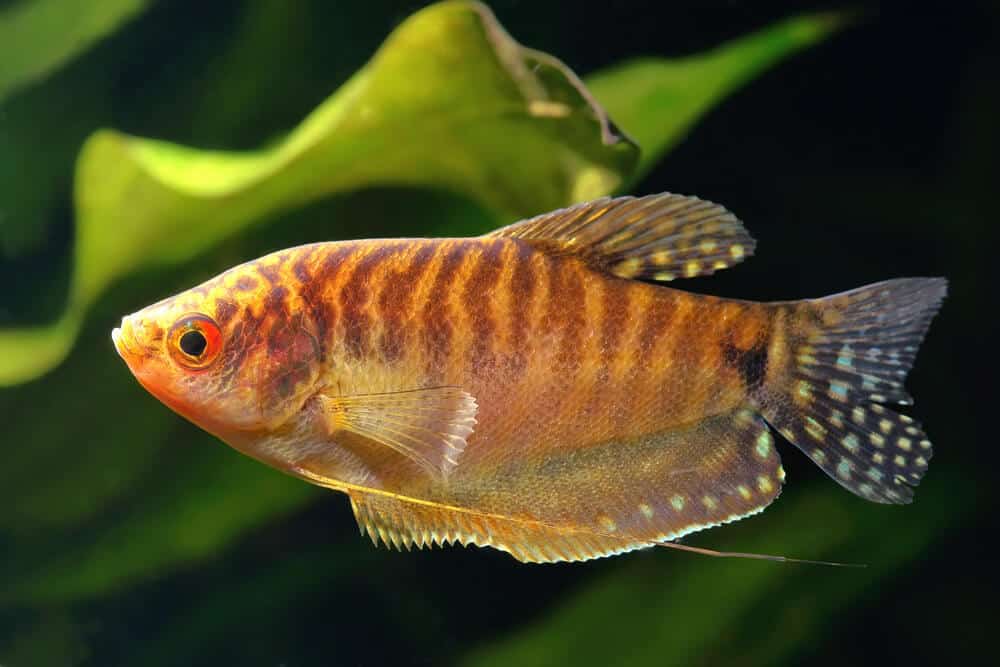
What Should You Feed Them?
In the wild, gouramis are omnivores who eat everything they can find, from microscopic invertebrates and insects to zooplankton. They will also feed on the surrounding grass and plants occasionally.
Bear this in mind while selecting plants for your aquarium; you’ll need a hardy species.
This fish isn’t picky about what it eats. Fresh or flake foods will appeal to them in the aquarium.
Maintain a well-balanced diet consisting primarily of flakes or pellets, with live foods such as brine shrimps or bloodworms added as needed. Vegetable tablets are another excellent method to add variety to their diet.
To provide them a good variety, give them both meat and vegetable sources.
Honey Gouramis And Their Care
Although these fish are pretty hardy, weekly water changes of at least 25% are advised to prevent tissue damage.
Fish infections are usually not a concern if you keep your aquarium clean and well-maintained.
They are, nevertheless, susceptible to Velvet disease if kept in an unclean aquarium. Oodinium pilularis is a parasite that resides in the skin, gills, and mouth of fish, leaving golden or brownish dust on the fins and body.
Constipation, bacterial infections, and a hole in the head are among ailments that can be caused by poor quality water.
Due to poor water conditions and improper aquarium setup, Ich illness, also known as White Spot disease, is among the most prevalent infections caused by the parasite Ichthyophthirius multifiliis.
Nobody desires their fish to get Hole in the Head sickness, also known as Hexamitiasis. Hexamita parasitic protozoans cause this, which affects both freshwater and marine fish.
The key to minimizing illness outbreaks in your tank is to maintain appropriate quality of water and a well-balanced diet.
When choosing a new substrate for your aquarium, bear in mind that any new substrate carries the danger of transmitting a disease.
Several gouramis commercially raised in the Far East have recently developed health issues as a result of colored, hormone-treated, and virus-infected specimens.
As a result, isolation is recommended before introducing the fish or substrate to an existing community.
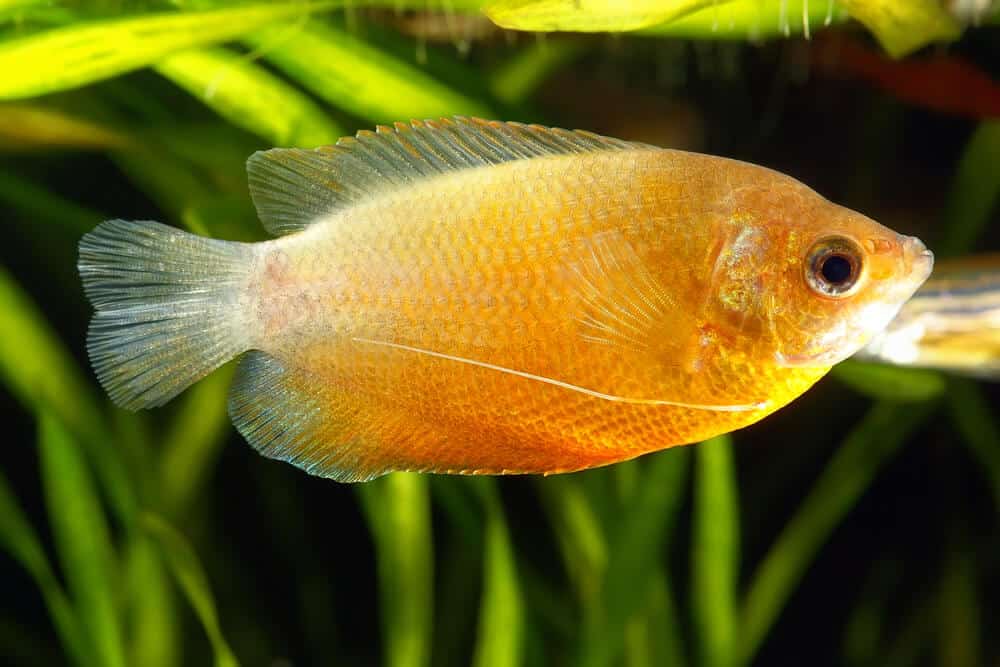
Breeding Techniques
If you can supply the correct conditions, breeding is rather simple. They create bubble nests, usually under a leaf if one is available. A momentary link will form between pairs.
We recommend a breeding aquarium with a capacity of 10-20 gallons. Keep the water at a height of 6-8 inches. The temperature should be 79-84°F, pH 7.0, and 8°dGH. Add a modest air-powered filtration system, such as a sponge filtration, as well.
It is beneficial to include a lot of plants. The leaves aid in the stability of the nest, which would otherwise break if built on the naked water surface. To avoid injuring the labyrinth organ, keep the air above the water warm and humid.
The females will begin to fill out eggs once they have been sufficiently nourished.
After constructing the bubble nest, the male will display his courting colors by swimming near a female and flashing his blue-black.
He’ll then swim back to the nest to persuade her to join him. He’ll keep doing these courtship rituals of showing and swimming until they reach the nest and start spawning.
The female lays about 20 eggs per spawn, which the male fertilizes right away. The male takes the eggs from the female’s mouth and places them in the bubble nest. The same couple will continue to spawn until roughly 300 eggs have been fertilized.
Water spitting comes in helpful once more. The male holds the eggs in position by spitting water droplets above the nest, driving them down into the nest, where they can be changed.
The female should be removed after spawning since the male will get violent and chase her away. As a result, the male’s guard and care for the eggs and nest.
How Many Honey Gouramis Should Be Kept Together?
Honey Gouramis are low-maintenance fish that can be kept as a single, pair, or group. They are not a schooling species, but they enjoy being with each other and often put on a better show in groups of 4 to 6 fish. A formed pair will usually swim together.
Can You Keep 2 Honey Gouramis Together?
Honey gouramis are a type of group of fish that should be kept in pairs.
During the nest-building drive, the males are exceedingly territorial. Even the females are chased out of the region.
A pair of Honey gourami should consequently be kept in an aquarium with a minimum edge length of 60 cm.
What Size Tank Does Honey Gourami Need?
Honey, croaking, sparkling, and dwarf gouramis can be kept in aquariums as little as 10 gallons, whereas gold, opaline, pearl, blue, and moonlight gouramis, as well as paradise fish, require a 30-gallon aquarium or more.
When they reach full size, kissing gouramis will require a 55-gallon tank or more.
What Plants Do Honey Gourami Like?
Some of the plants that are like by gouramis are Hornwort, Java fern, Amazon sword, Salvinia, and Water lettuce.
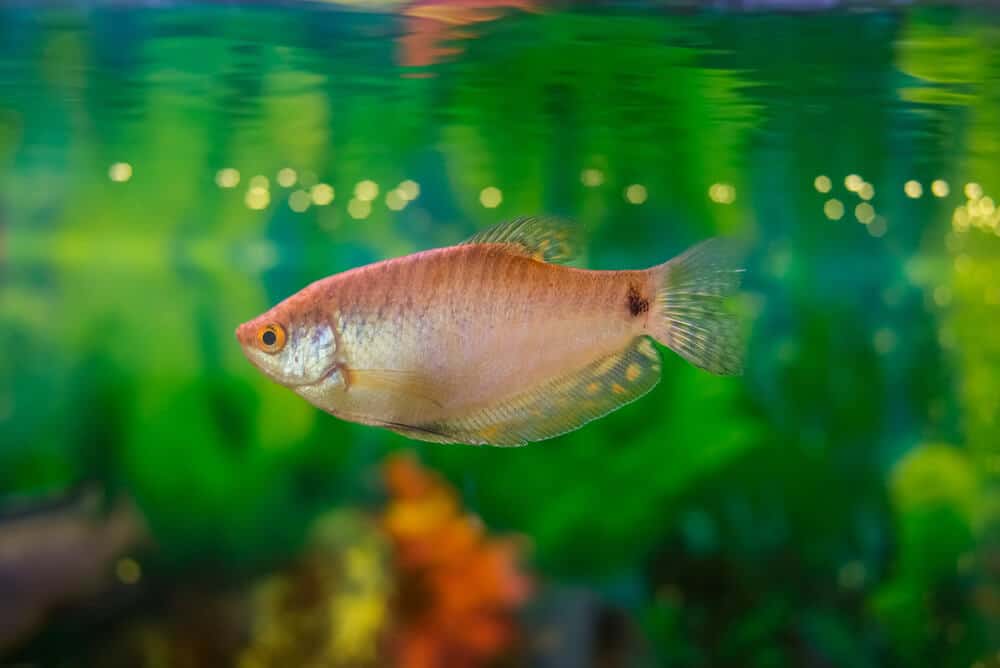
Honey Gourami Tank Mates
The Honey Gourami is a timid fish with a calm demeanor. As a result, choosing the correct tank mates is critical to your Gourami’s health. Other gentle fish make good tank mates.
Here are some of Gourami’s preferred tank mates:
1. Otocinclus Catfish
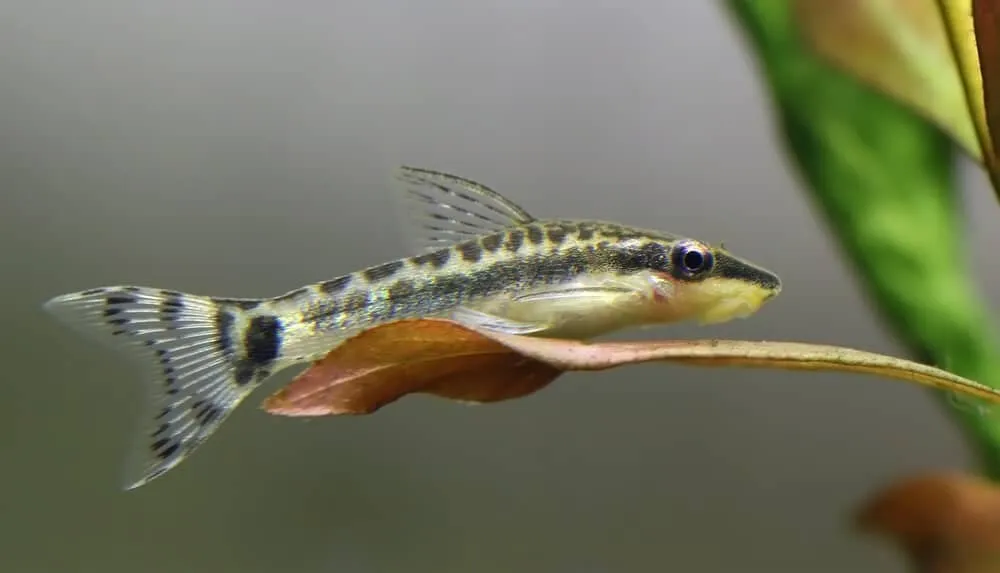
Aquascapers love Otocinclus Catfish because they’re unobtrusive and excellent algae consumers.
They are not fish that will bother their aquarium companions; thus, they pair well with shy Dwarf Gouramis. However, because Otocinclus can be delicate, you should likely only keep them if you have some expertise with fishkeeping.
You’ll need to keep track of your water levels and keep your aquarium clean at all times.
Otocinclus are excellent algae eaters, yet our home tanks are frequently too “clean” to support a group. Provide plenty of algal wafers and blanched vegetables like Zucchini to keep them well-fed.
You may even produce your green algae by placing a bucket with smooth river rocks and water in a sunny location and using it as an extra source of food in your tank.
2. Mystery Snail
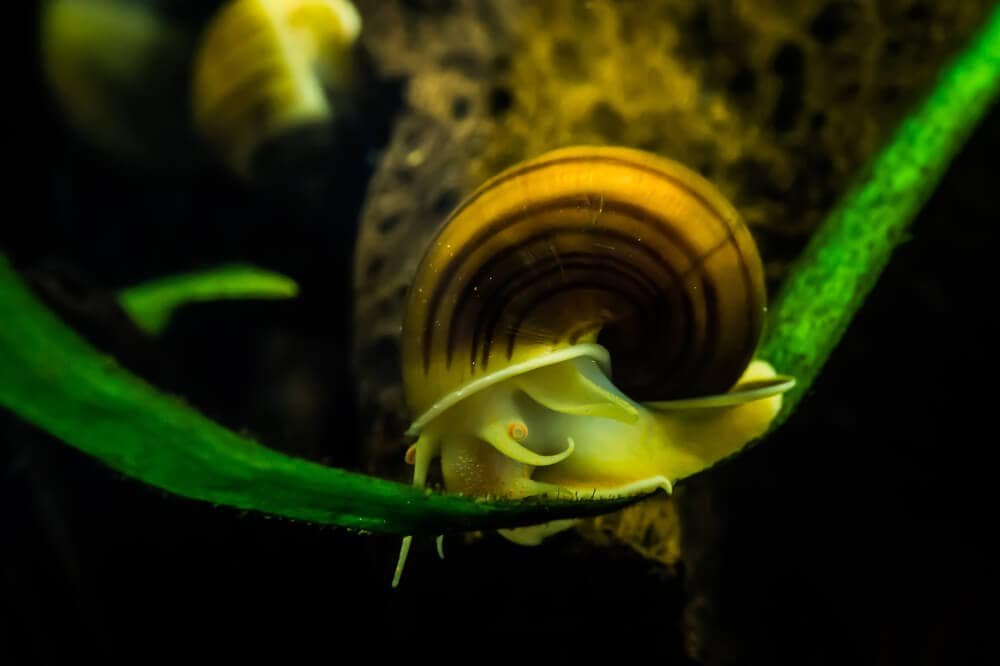
Aquatic snails are a pleasant and beneficial addition to most tanks, and Gourami tanks are no exception.
The Mystery Snail, which is closely related to the more well-known Apple Snail but is much shorter and will typically leave your plants alone, is among our personal favorites.
Because they are completely peaceful, Mystery Snails make a fantastic tank buddy for your Gourami.
They’re big enough to resist nips from a curious Gourami, and they’ll even help keep your tank tidy by cleaning up leftover food. They’re also entertaining to watch and come in a variety of hues, including white, blue, yellow, and purple.
3. Harlequin Rasbora
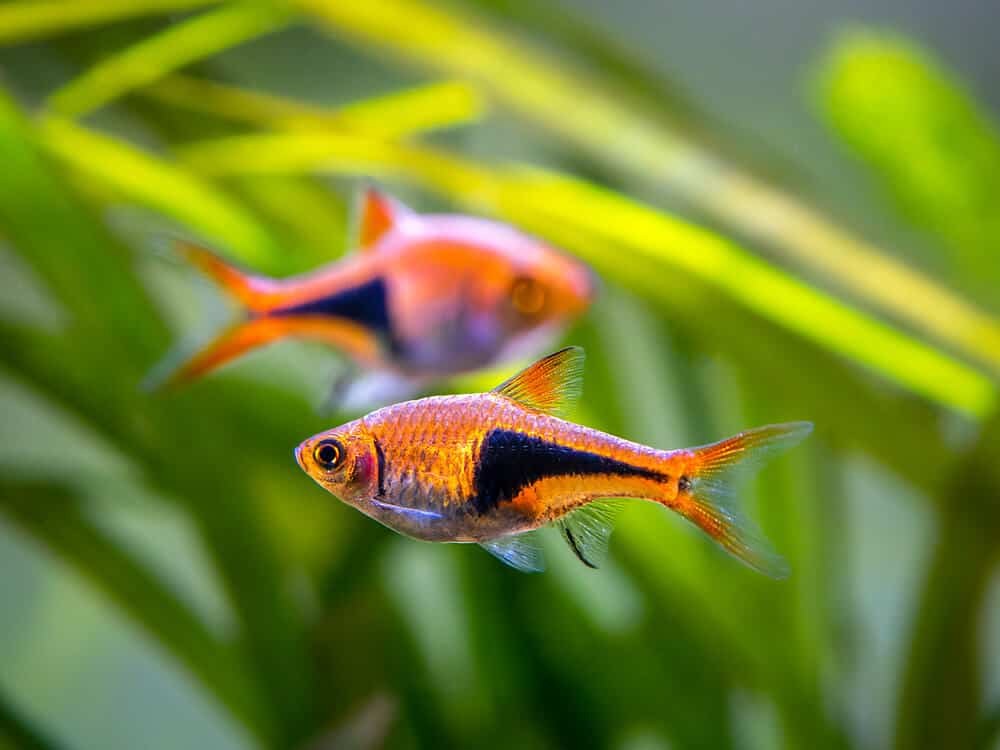
Harlequin Rasboras are another lively and colorful schooling fish that is a good choice if you want to add some life to your tank without annoying your Gourami.
These tiny Rasboras don’t require a huge tank, and they favor water conditions that Gouramis will enjoy as well. You won’t require a fancy aquarium set-up if you want to keep Harlequin Rasboras.
They’ll enjoy it if you try to recreate their natural environment, which includes small, tranquil, dimly light streams with plenty of live plants.
Low-light plants, such as Java Fern, can be used in the aquarium because they are easy to grow and don’t mind the absence of bright light.
4. Dwarf Crayfish
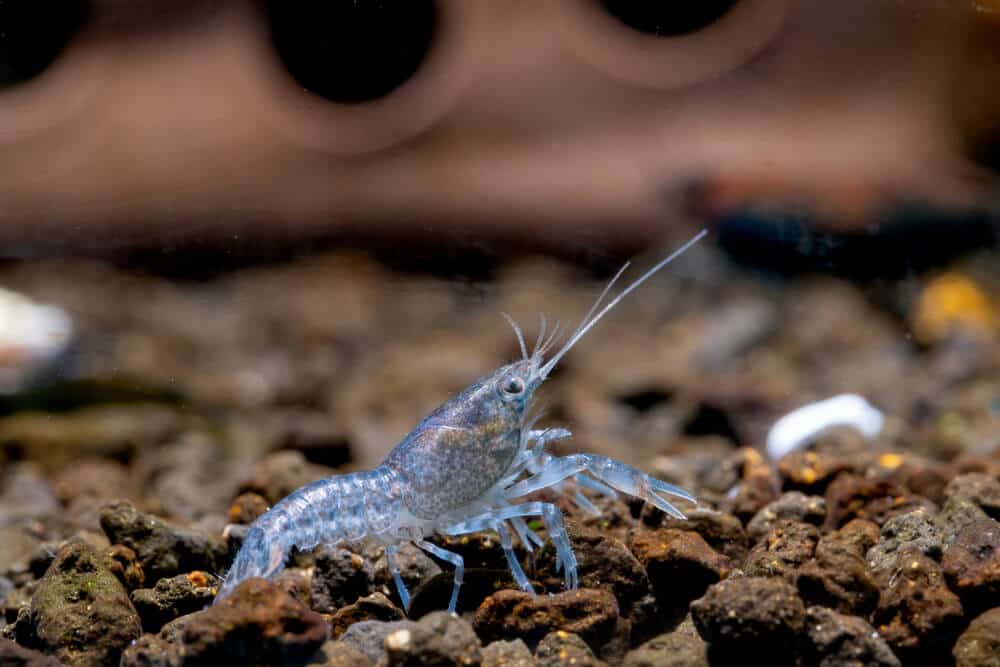
Crayfish have a terrible rep in the aquarium community.
This is expected, given that large crayfish species aren’t exactly team players; they’re more likely to eat their tank companions than happily coexist with them.
The tiny dwarf crayfish of the Cambarellus genus, on the other hand, is completely another story. Dwarf Crayfish make excellent Gourami tank companions because they live in a different water layer than Gouramis.
They are bottom feeders, so they should leave each other alone (even if a Gourami tries to harass the tranquil crayfish, it should be able to stand its ground and sustain no harm).
To maintain your Dwarf Crayfish cheerful, make sure your tank has plenty of hiding spots (shrimp flats are a popular choice).
Leaf litter is also liked, which is useful because, as previously said, it is a typical Gourami habitat.
5. Ember Tetra
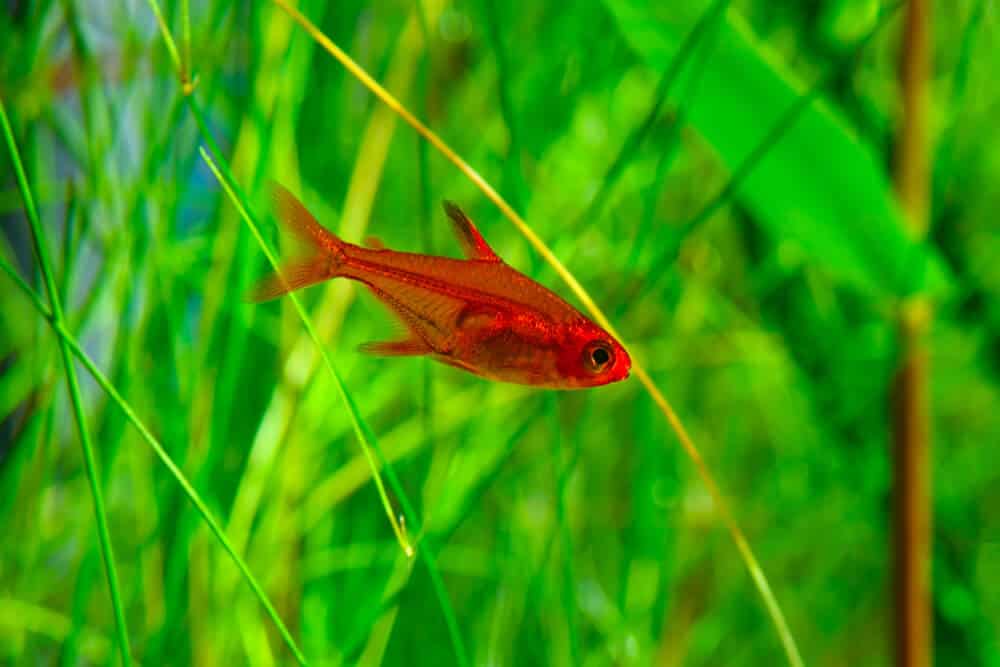
The small Ember Tetra, as its name suggests, is the ideal addition to your tank if you want to add a splash of color. This schooling fish is completely quiet and not overly active, so it won’t bother your Gouramis.
Both Gouramis and ember tetras prefer similar water conditions: soft, slightly dark water with many plants is ideal.
Maintain your Ember Tetras in groups of at least eight, preferably twelve or more. Larger groupings will display more fascinating, natural behavior and may even reproduce without your assistance.
If there is enough cover in the form of floating plants, some of the fries may survive to maturity without being consumed by your Gourami.
6. Panda Corydoras
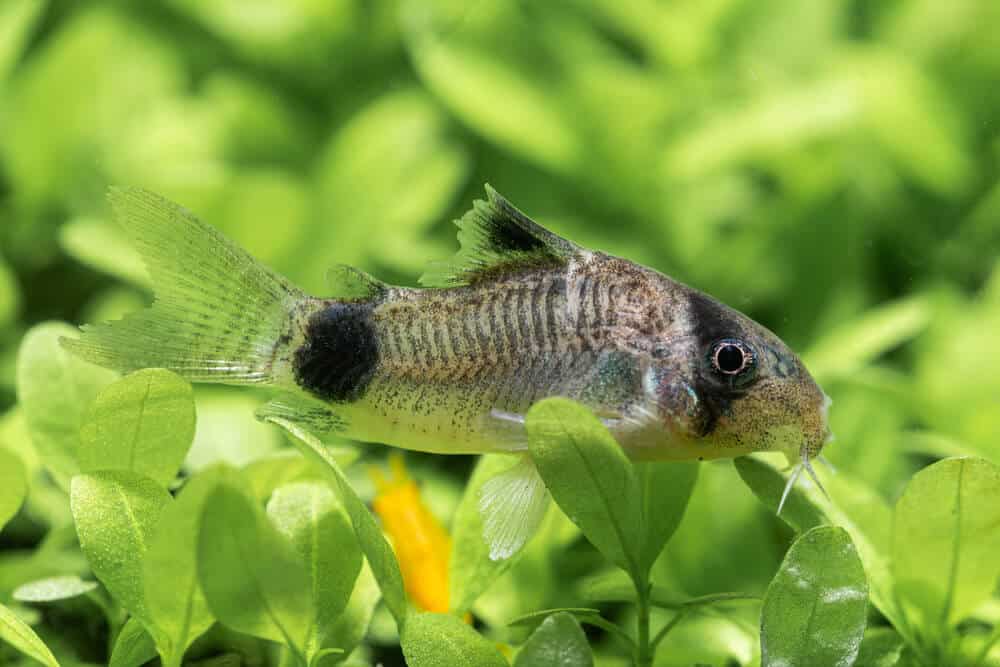
Cory Catfish is one of the most important fish in your Gourami community aquarium. These armored catfish are calm but active and entertaining to watch. This makes them ideal tank mates for shy Gouramis.
Cory catfish prefer the upper water layer and aren’t bothered by the presence of most bottom-dwellers. Furthermore, they have similar water preferences and will thrive in slightly soft and acidic water.
We enjoy Panda Corydoras, a Cory species named for its distinctive black and white pattern.
This type of fish stays small, so if you want to keep it, you won’t need a big tank.
Keep in mind that Corydoras catfish like a sandy substrate since they like to dig around for edible morsels, and jagged pebbles might injure their sensitive barbels.
Feed a variety of floating meals for the Gouramis and sinking pellets for the catfish to keep your Panda Cories from going hungry.
7. Pygmy Corydoras
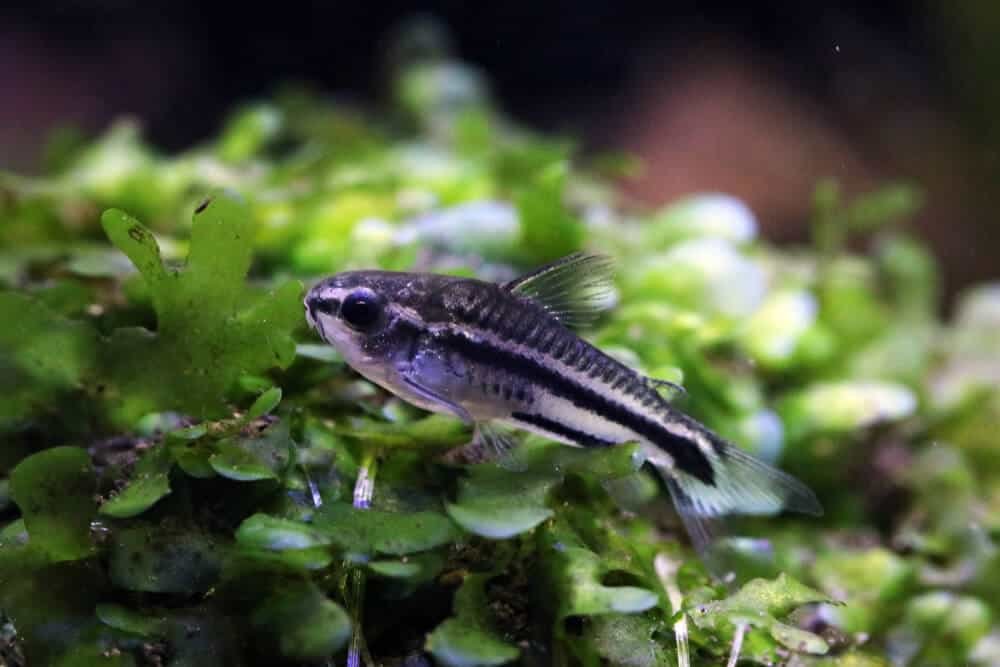
If you’re searching for a fish to brighten up your tank, Pygmy Corydoras are an excellent option. Their lively behavior brings a layer of movement to the scene, and they’re a lot of fun to watch.
Because Gouramis are usually bottom feeders, they won’t mind their existence). Take into account, however, that keeping these tiny fish in big crowds is critical.
They are timid and typically cling to their hiding locations if there are less than ten specimens. Additionally, use rock formations, driftwood, and caverns to provide lots of covers.
8. Amano Shrimp
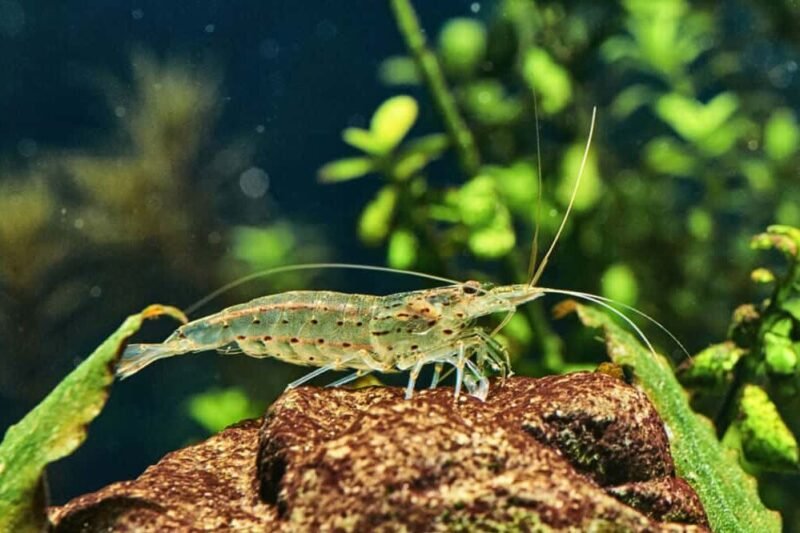
Amano Shrimp make excellent tankmates for Gouramis because, unlike dwarf shrimp like cherry shrimp, they are big enough to escape being nipped or eaten.
This is also true for Ghost Shrimp belonging to the Palaemonetes genus; however, these are a little more forceful and may annoy your Gouramis.
Ghost Shrimp are also less helpful than Amano Shrimp since they don’t eat as much algae as Amano Shrimp. Don’t worry if you haven’t kept Amano Shrimp before; they’re not difficult to keep.
All these shrimp require is a steady supply of vegetable-based foods like algae, algal wafers, and the occasional bite of blanched zucchini or spinach.
Because they only breed in brackish water tanks, you won’t have to worry about overpopulation.
9. Glowlight Tetra
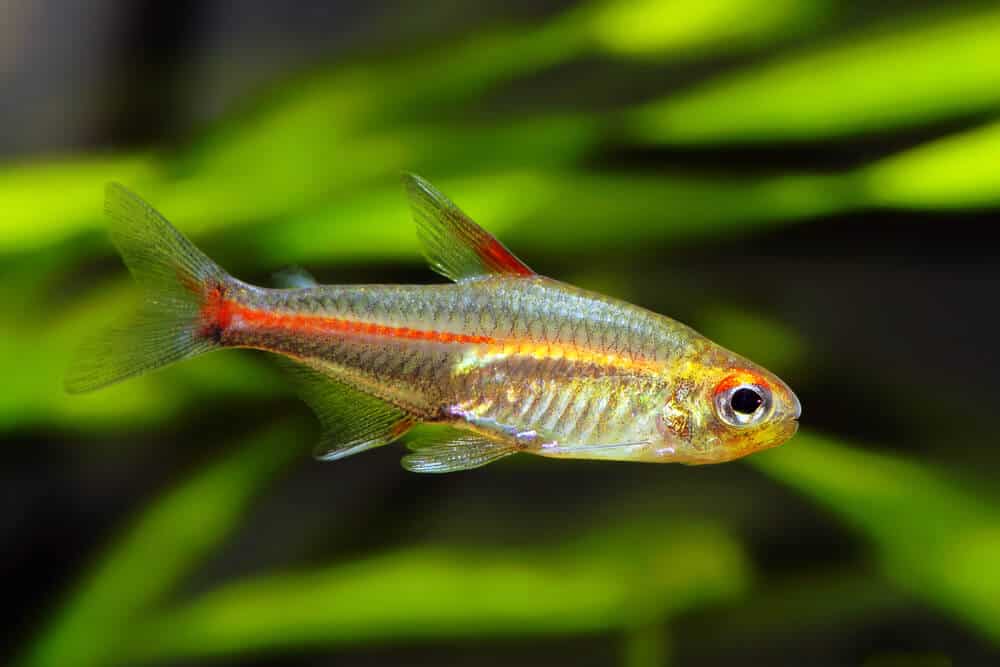
Do you want to get some Neon Tetras or Cardinal Tetras for your aquarium? Other Tetra species, like the cheery Glowlight Tetra, should also be considered.
This tranquil schooling fish is a suitable fit for Gouramis because its colors are less ‘neon,’ preventing the Gourami from mistaking it for a competitor.
It prefers soft, somewhat acidic water with some cover under comparable conditions. Consider coloring the water with leaf litter or putting some floating plants to obscure the light.
The Glowlight Tetra, like other Tetras, will enjoy the company of other Tetras. You can wind up with bland-looking, timid Glowlights if you keep it in small numbers.
Instead, look for a group of at least 8 fish to watch their genuine behavior.
The Gouramis won’t mind because the Tetras live in a different water stratum. They are energetic, yet they are also peaceful and will not annoy tank mates.
10. Bristlenose Pleco
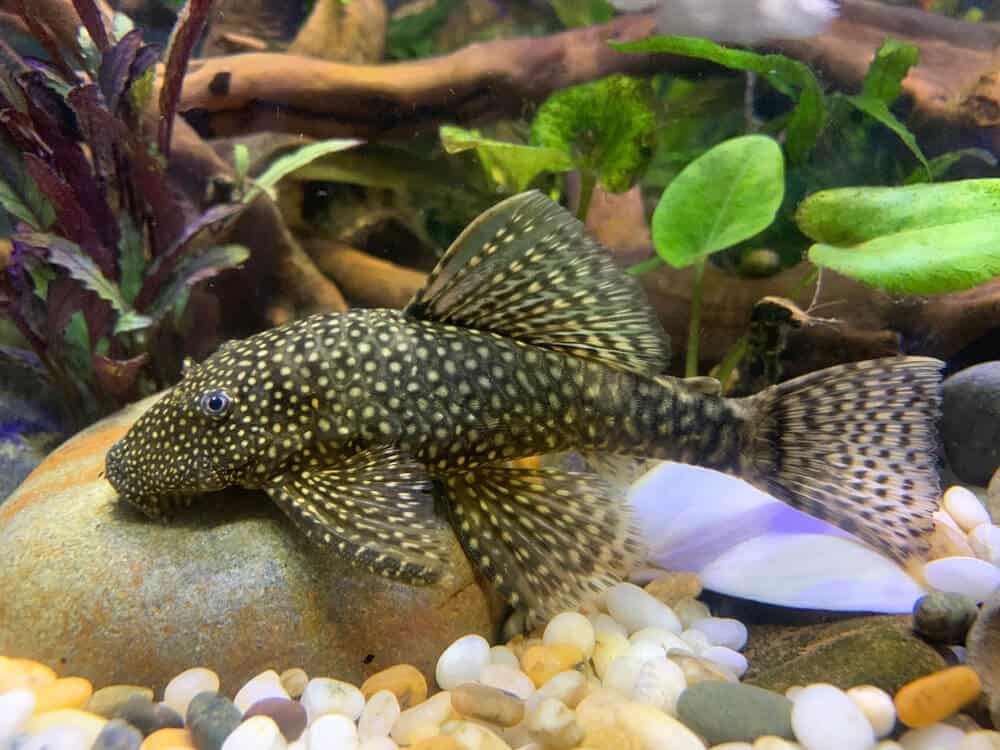
Small Plecostomus catfish species, such as the popular Bristlenose Pleco, pair nicely with timid fish because they aren’t very active and will spend much time resting on the tank’s floor or attached to the glass.
Bristlenoses and other Plecos aren’t the ideal choices for tiny aquariums, even if they shouldn’t grow much more than 5 inches.
If you want to retain this species, you’ll need at least a 30-gallon tank because it releases a lot of waste.
This makes it an excellent tank companion for some of the larger Gourami species, such as the stunning Pearl Gourami and the tenacious Blue Gourami.
11. Kuhli Loach
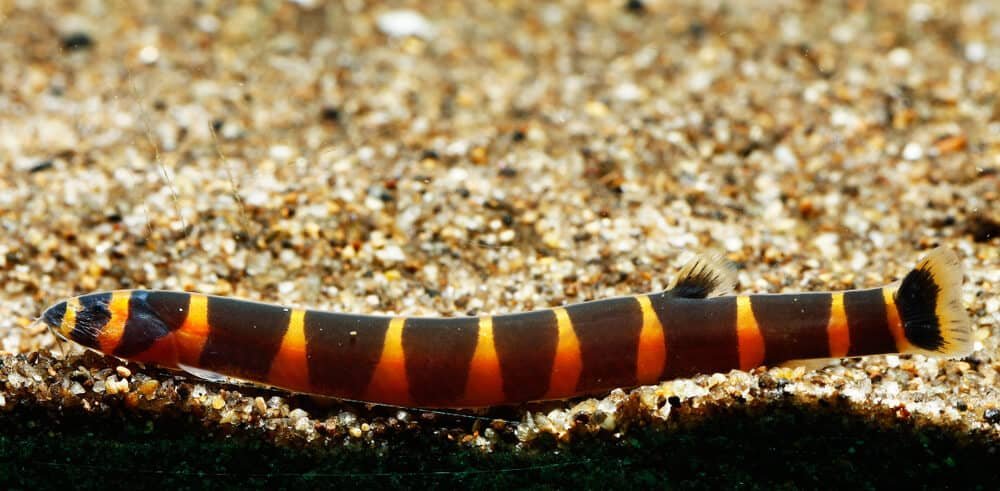
The Pangio genus of loaches (which usually have a yellow and dark brown banded pattern) are excellent tank mates for any fish that requires quiet and discreet company.
These elongated loaches are nocturnal, meaning they spend the majority of their time lurking in any corner or crevice they can find during the day. However, don’t mistake their reclusiveness for boredom!
Their social activity is entertaining to watch, so gather a large group (8+) for the best experience.
During the day, you’ll notice them stacking up in their hiding places, only coming out when it’s time to eat. Their activity level increases at night, and they zoom about the tank; consider putting a moonlight to see this behavior.
These bottom-feeder fish, like Corydoras, will enjoy sinking pellets to keep ravenous Gouramis from eating their food before it reaches the substrate.
12. Cherry Barb
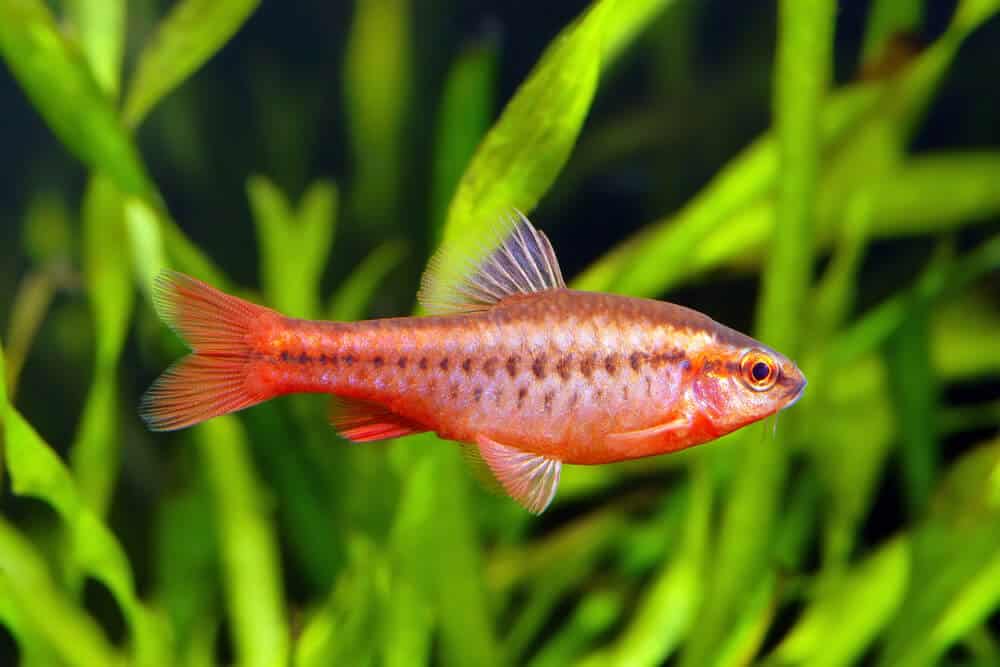
If you’re familiar with the Puntius genus of barbs, you might be startled to see one on a list of Gourami aquarium companions.
Many Barb species aren’t the finest aquarium mates for shy or quiet fish because they’re pretty energetic and can become a little nippy.
However, not cherry barbs! Unlike many of its cousins (such as Tiger Barbs), they make excellent communal fish and are also attractive.
Bottom Line
Whenever it comes to water values, Cherry Carbs are comparable to Gouramis, albeit they are more versatile and can get adapted to a wide range. Because they are schooling fish, you’ll want to have a group of at least eight to appreciate their natural behavior.
The gourami comes in a wide range of colors and sizes, with the majority of them being ideal for keeping in a community tank. When looking for gourami mates, search for non-aggressive, chilled-out fish and invertebrates.
They should have the same fundamental water requirements. It’s also best if they consume the same or a similar diet and are non-aggressive. Also, consider the size of your aquarium to the size of your fish, and avoid overcrowding your aquarium.



